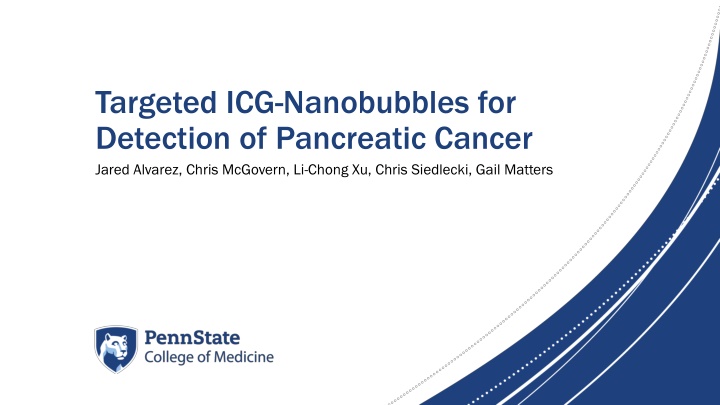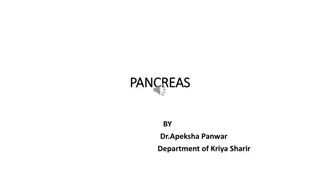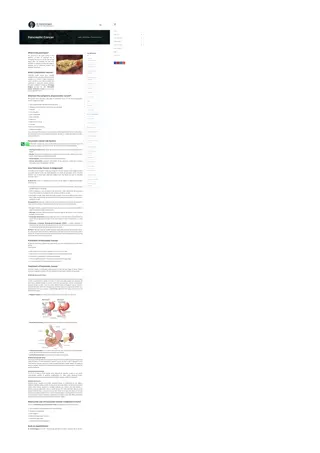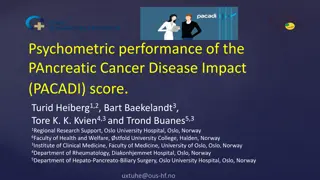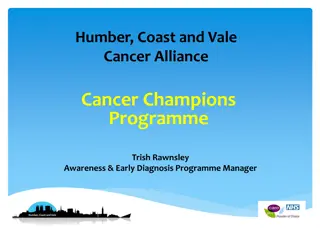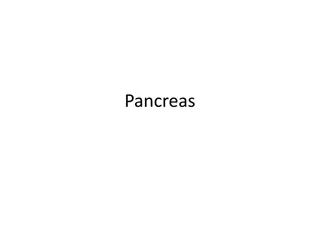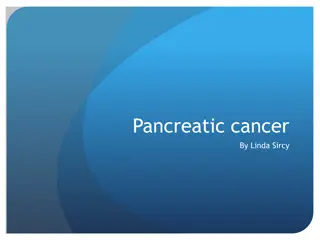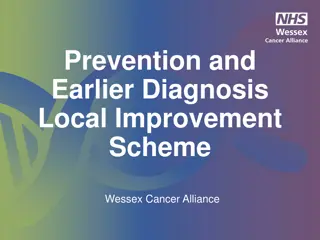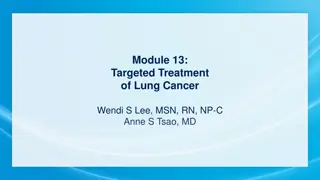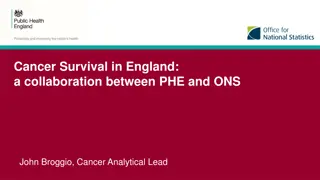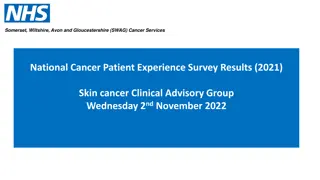Targeted ICG-Nanobubbles for Detection of Pancreatic Cancer
Developed for early detection of pancreatic cancer, targeted ICG-nanobubbles offer enhanced image contrast and sensitivity using photoacoustic imaging. The process involves optimizing the synthesis of ICG-loaded PLGA nanobubbles and quantifying the encapsulated ICG. Utilizing double emulsion techniques and AFM analysis, this innovative approach shows promise in improving diagnostic capabilities for pancreatic ductal adenocarcinoma.
Download Presentation

Please find below an Image/Link to download the presentation.
The content on the website is provided AS IS for your information and personal use only. It may not be sold, licensed, or shared on other websites without obtaining consent from the author.If you encounter any issues during the download, it is possible that the publisher has removed the file from their server.
You are allowed to download the files provided on this website for personal or commercial use, subject to the condition that they are used lawfully. All files are the property of their respective owners.
The content on the website is provided AS IS for your information and personal use only. It may not be sold, licensed, or shared on other websites without obtaining consent from the author.
E N D
Presentation Transcript
Targeted ICG-Nanobubbles for Detection of Pancreatic Cancer Jared Alvarez, Chris McGovern, Li-Chong Xu, Chris Siedlecki, Gail Matters
Introduction Pancreatic ductal adenocarcinoma is one of the deadliest forms of cancer Detection Treatment resistance https://utswmed.org/medblog/pancreatic-cancer-nutrition/
Photoacoustic imaging is a promising biomedical tool Han, S. H. (2018). Review of Photoacoustic Imaging for Imaging-Guided Spinal Surgery. Neurospine,15(4), 306-322. doi:10.14245/ns.1836206.103
Hypothesis Hypothesis Photoacoustic imaging will improve early detection of pancreatic Photoacoustic imaging will improve early detection of pancreatic cancer. cancer. Targeted PLGA nanobubbles will improve photoacoustic image contrast and Targeted PLGA nanobubbles will improve photoacoustic image contrast and sensitivity. sensitivity. My Goal Optimize synthesis of Indocyanine green (ICG) loaded PLGA Optimize synthesis of Indocyanine green (ICG) loaded PLGA nanobubbles nanobubbles Quantify ICG encapsulated in loaded PLGA nanobubbles Quantify ICG encapsulated in loaded PLGA nanobubbles
Synthesizing PLGA nanobubbles (NBs) Double Emulsion Double Emulsion Isopropanol wash Sonication Sonication CHCl2+PLGA PVA Centrifugal wash Filtration
Emulsions Two normally immiscible liquids mixed through dispersion Emulsion within an emulsion Water in oil single emulsion Water/oil/water multiple emulsion
Synthesizing PLGA nanobubbles (NBs) Double Emulsion Double Emulsion Isopropanol wash Sonication Sonication CHCl2+PLGA PVA Centrifugal wash Filtration
AFM Samples Samples Filtered Unfiltered
Quantifying ICG Encapsulation Concentration vs Fluorescent Emission ICG Concentration vs Absorbance 4 300 y = 116.82x - 0.2938 R = 0.9985 3.5 250 3 Concentration ( M) Concentration (mg/mL) 200 2.5 150 R = 0.1417 2 100 1.5 50 1 0 0.5 0 0.5 1 1.5 2 2.5 Absorbance Value* 0 0 100 200 300 400 500 600 Fluorescence*
Quantifying ICG Encapsulation Calculated ICG Concentration ( M) Batch Average Absorbance NB15 4.13 0.03045 N/A NB15 ICG 4.25 0.37562 43.5857
NIR Image of ICG Encapsulated NBs Free ICG PLGA NBs PLGA ICG NBs
Future directions Quantifying aptamer attachment Zeta potential Picogreen Quantifying particle fluorescence lifetime In vitro testing In vivo testing
Matters Lab Matters Lab Dr. Gail Matters Chris McGovern Laura Felix Delphin Monga Siedledki Siedledki Lab Lab Dr. Li-Chong Xu Dr. Chris Siedledki TEM Core TEM Core Dr. Han Chen Collaborators Collaborators Dr. Sri-Rajasckhar Kothapalli Sumit Agrawal Ajay Dangi STEP STEP- -UP Dr. Bonnie Halpern-Felsher Sheila McLaughlin UP Mentors Mentors Acknowledgements Theresa Swenson Dr. KC Ang Dr. Marnie Halpern The STEP-UP HS program is supported by the National Institute of Diabetes and Digestive and Kidney Diseases of the National Institutes of Health Grant #: 2R25DK078382-12
